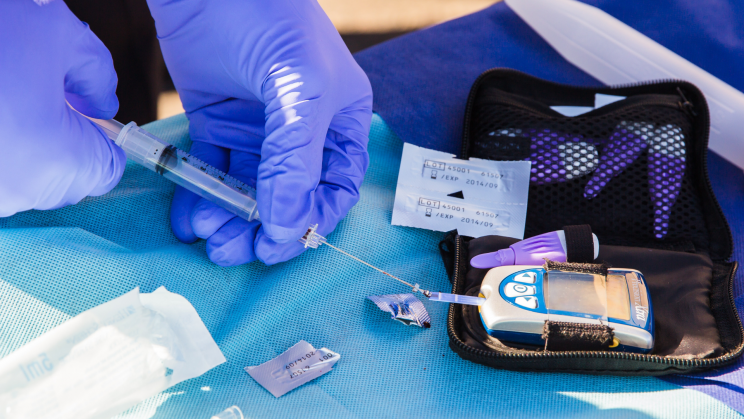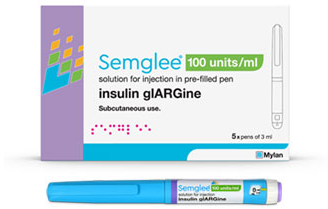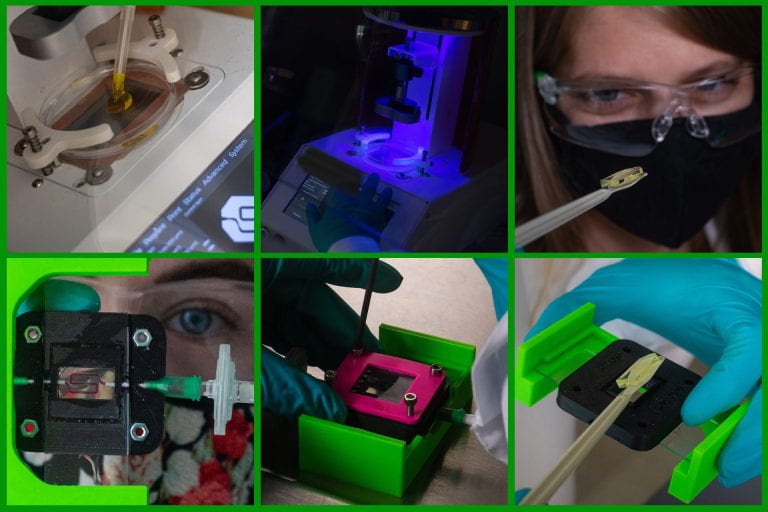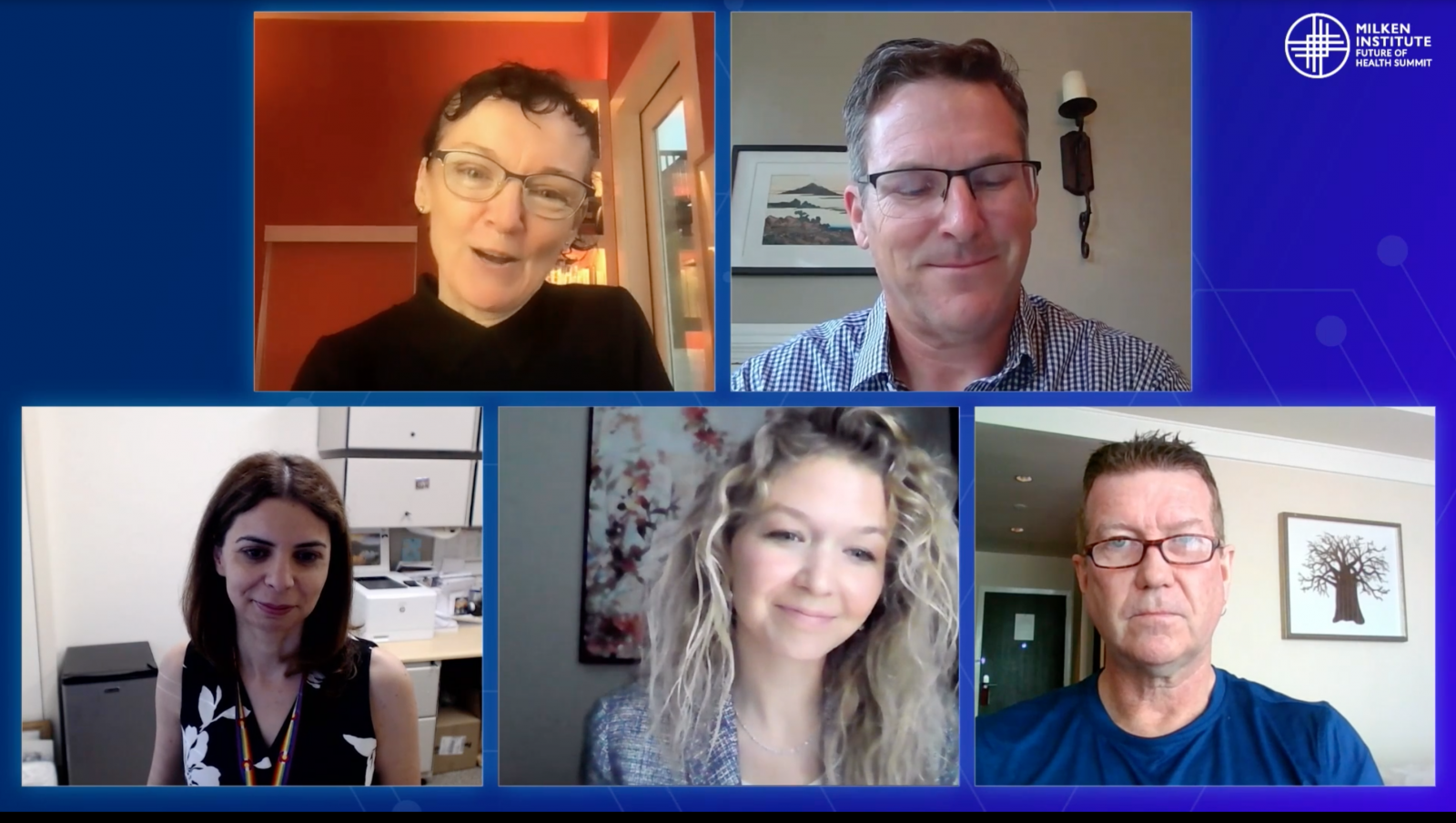Biohackers Are Working to Make Insulin 98% Cheaper as reported by Eric James Beyer for InterestingEngineering.com, 26 July 2021.
 Anthony di Franco, founder of the Open Insulin Foundation, an organization dedicated to providing an open-source, affordable model of insulin production, is being less hyperbolic than you might think. Millions of diabetics in the United States can empathize with the sentiment, which he recently expressed to Freethink in a video interview from June. The Open Insulin Foundation consists of a group of volunteer scientists in the California Bay Area who are working to reverse-engineer insulin in the lab and set up a patent-free platform to distribute it. The team believes they can reduce those costs by around 98 percent to around $5-15 per vial.
Anthony di Franco, founder of the Open Insulin Foundation, an organization dedicated to providing an open-source, affordable model of insulin production, is being less hyperbolic than you might think. Millions of diabetics in the United States can empathize with the sentiment, which he recently expressed to Freethink in a video interview from June. The Open Insulin Foundation consists of a group of volunteer scientists in the California Bay Area who are working to reverse-engineer insulin in the lab and set up a patent-free platform to distribute it. The team believes they can reduce those costs by around 98 percent to around $5-15 per vial.
Over 35 million people in the US live with diabetes, a condition that is both the 7th leading cause of death in the country and rapidly on the rise, with millions more people being diagnosed each year.
The US represents nearly 15 percent of the worldwide insulin market, yet accounts for roughly half of its revenue. That is partially because, according to some estimates, the price of insulin has increased nearly 1,200 percent in the last 25 years. This has resulted in millions of people having to make ever-increasing sacrifices to be able to afford it.
Why such an astronomic increase in price? Producing insulin is surprisingly inexpensive, just “a dollar fifty to five dollars a vial,” according to di Franco, whose foundation accuses manufacturers of purposefully making minute changes to existing insulin formulas and patenting them, instead of creating more generic (and cheaper) versions of existing ones. However, this is a small part of a much larger issue.
Three companies hold a virtual monopoly over the world’s insulin supply: Novo Nordisk, Eli Lilly, and Sanofi. These companies have a history of raising prices in tandem with each other throughout the years, but that suspected monopolistic behavior is just one reason for insulin’s high price tag.
Further complicating things is the dense web of the insulin supply chain they operate in, which bumps list prices to upwards of $300. These manufacturers liaison with a variety of distribution chains, pharmacies, healthcare providers, and entities known as Pharmacy Benefit Managers (PMBs).
PMBs manage drug benefits on behalf of insurance companies, Medicare drug plans, and other payers. They act as an intermediary to negotiate with manufacturers and pharmacies as part of efforts to control drug spending, and in doing so, they play a large but mostly hidden role in determining the price of drugs for insurers. PBMs also develop lists of what medications are and are not covered for insurance companies, which affects how out-of-pocket costs are set.
Read more: Biohackers Are Working to Make Insulin 98% Cheaper
FDA Approves First Interchangeable Biosimilar Insulin was reported by Miriam Tucker for Medscape.com, 28 July 2021.
 The US Food and Drug Administration (FDA) has approved the first interchangeable insulin, Semglee (Mylan Pharmaceuticals), which can be substituted for glargine (Lantus, Sanofi) at the pharmacy without the need for a separate prescription. The approval will allow Semglee to function like a generic drug in the market and may reduce insulin costs. It is indicated to improve glycemic control in adults and pediatric patients with type 1 diabetes and in adults with type 2 diabetes.
The US Food and Drug Administration (FDA) has approved the first interchangeable insulin, Semglee (Mylan Pharmaceuticals), which can be substituted for glargine (Lantus, Sanofi) at the pharmacy without the need for a separate prescription. The approval will allow Semglee to function like a generic drug in the market and may reduce insulin costs. It is indicated to improve glycemic control in adults and pediatric patients with type 1 diabetes and in adults with type 2 diabetes.
Originally approved in June 2020 as a biosimilar to glargine, Semglee is now an “interchangeable biosimilar,” meaning that it has no clinically meaningful difference from the reference product and also may be substituted for that product — in this case, glargine (Lantus) — without prescriber intervention, just as generic drugs typically are, subject to state pharmacy laws.
Read more: FDA Approves First Interchangeable Biosimilar Insulin
Rice University team creating insulin-producing implant for Type 1 diabetes was shared by Jade Boyd on the Rice University News and Media, 26 July 2021.
The three-year project is a partnership between the laboratories of Omid Veiseh and Jordan Miller that’s supported by a grant from JDRF, the leading global funder of diabetes research. Veiseh and Miller will use insulin-producing beta cells made from human stem cells to create an implant that senses and regulates blood glucose levels by responding with the correct amount of insulin at a given time.

Veiseh, an assistant professor of bioengineering, has spent more than a decade developing biomaterials that protect implanted cell therapies from the immune system. Miller, an associate professor of bioengineering, has spent more than 15 years researching techniques to 3D print tissues with vasculature, or networks of blood vessels.
“If we really want to recapitulate what the pancreas normally does, we need vasculature,” Veiseh said. “And that’s the purpose of this grant with JDRF. The pancreas naturally has all these blood vessels, and cells are organized in particular ways in the pancreas. Jordan and I want to print in the same orientation that exists in nature.”
Read more: Rice team creating insulin-producing implant for Type 1 diabetes
Tackling Type 1 Diabetes: Where the Science is Heading was hosted by the Milken Institute’s Future Of Health Summit, 22 June 2021. This discussion highlighted the perspectives of various stakeholders who are working together to help people affected by T1D. Panelists shared their enthusiasm over new treatments and innovations, and assessed the resources needed to overcome current challenges in T1D investigation.
 The panel was moderated by Kelly Close, Founder and Chair, The diaTribe Foundation; President, Close Concerns, and was comprised of:
The panel was moderated by Kelly Close, Founder and Chair, The diaTribe Foundation; President, Close Concerns, and was comprised of:
- Aaron Kowalski, CEO, JDRF International
- Shideh Majidi, Assistant Professor, Pediatric Endocrinology, Barbara Davis Center for Diabetes
- Felicia Pagliuca, Vice President and Disease Area Executive, Type 1 Diabetes, Vertex Pharmaceuticals
- David Pearce, President of Innovation, Research and World Clinic, Sanford Research


The Rice University effort is amazing. Gosh, I hope it works. I volunteer. What they are not looking for old guys who raise their hands too fast?
Well, I cold masquerade as a 22-year-old.
rick